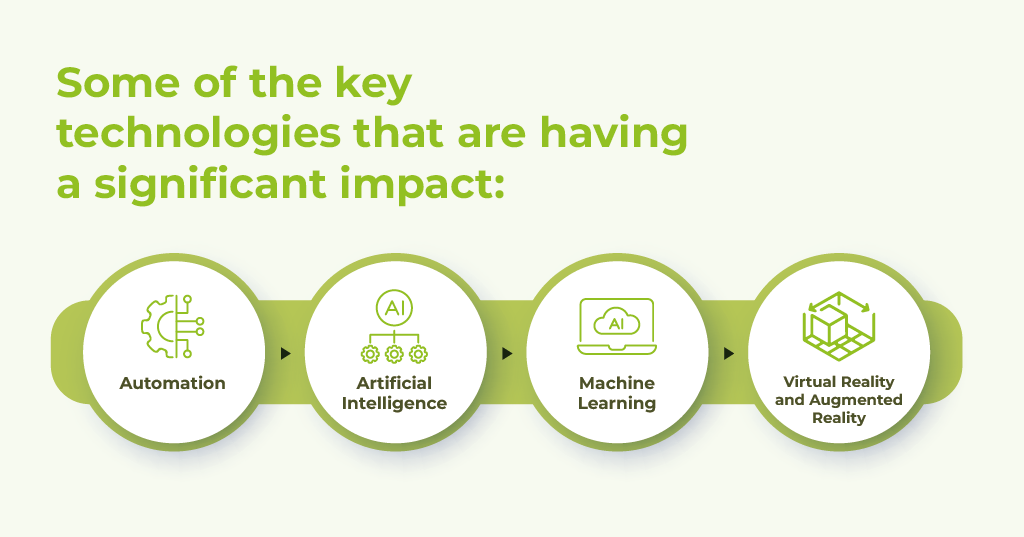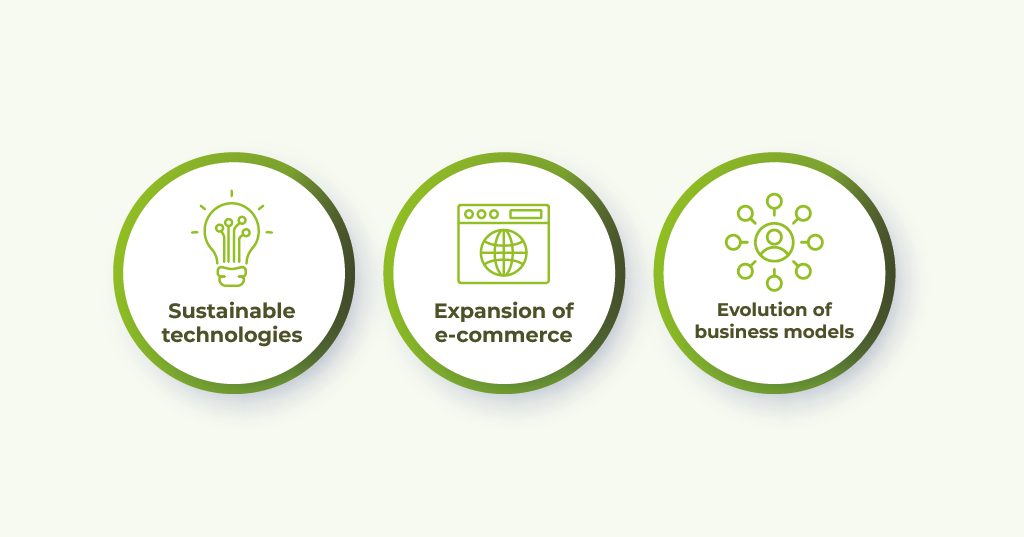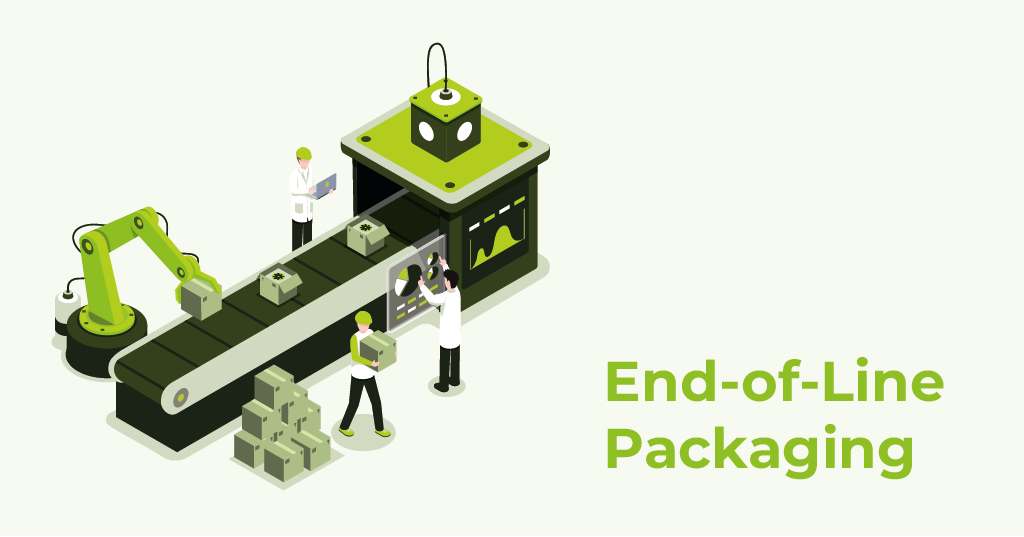The logistics sector is constantly evolving, thanks to the introduction of new technologies and innovative solutions that are revolutionizing the processes and methods of goods transportation while improving the efficiency, sustainability, and safety of logistics operations. Some of the key technologies that are having a significant impact include:
- Automation: Automation allows repetitive and hazardous tasks to be automated, increasing efficiency and improving safety.
- Artificial Intelligence (AI): AI is increasingly used to automate decision-making and forecasting, improving the effectiveness of processes.
- Machine Learning (ML): A branch of AI that learns from data to optimize performance. In the logistics sector, it is used to optimize delivery routes and better manage inventory.
- Virtual Reality (VR) and Augmented Reality (AR): These technologies allow the simulation of real situations and provide information to operators to improve processes.

Other trends that will drive logistics innovation in the coming years include:
- Adoption of sustainable technologies: Companies are investing in technologies that reduce environmental impact.
- Expansion of e-commerce: With the growth of e-commerce, there is an increasing need to manage the flow of goods more efficiently.
- Evolution of business models: The integration of logistics services requires technologies that support these new models.

1. New Pallet Formats and New Functions of Pallets
The way goods are transported has also been revolutionized by the introduction of half pallets and quarter pallets. These smaller pallet formats are ideal not only for transportation but also for displaying and promoting products in retail stores.
Plastic or wooden pallets not only play a key role in organizing and moving goods but are also effective marketing tools, allowing products to be displayed in strategic areas of stores.
What are half pallets and quarter pallets?
Half pallets and quarter pallets are smaller versions of standard industrial pallets. Their reduced size and light weight allow for easy handling, even without forklifts. They are perfect for small-sized goods and are widely used in the retail distribution sector.
In many industries, these pallets are also used as display pallets to promote products in stores. They can be moved easily without having to reload the goods, thus increasing flexibility and operational efficiency.
2. Towards Integrated Logistics
Integrated logistics represents the natural evolution of logistics in the digital era and the current market conditions. Companies in the supply chain are already investing in applications based on artificial intelligence and advanced data analysis.
Supply Chain Management and Integrated Logistics
Today, an integrated logistics system is a complex ecosystem where information, skills, and tools converge. The management of orders, warehouse, and document processes is digitally coordinated to improve efficiency and reduce costs.
How does integrated logistics work?
- Orders, inventory, and shipments are interconnected in real-time.
- The automatic exchange of data ensures transparency and optimizes processes.
- Artificial intelligence and data analysis help identify bottlenecks and improve efficiency.
3. End-of-Line Packaging: Increasingly Strategic in Terms of Productivity, Efficiency, and Safety
End-of-line packaging refers to the machines and equipment used to complete product packaging before shipment. These include packers, palletizers, stretch wrappers, and sealers.
The factors driving the development of the end-of-line packaging market include the growth of retail and e-commerce, the need to increase energy efficiency, and the greater use of automation. These factors reduce the risk of product damage and minimize human error.
Automation in end-of-line packaging:
- Automation allows for higher production speed, reducing costs.
- Automated inspection and control improve the quality of packaged products.
Quality Control and Inspection:
- Systems such as metal detectors, X-rays, and machine vision ensure that products comply with quality standards.
- These systems can detect contaminants, verify weight, and check the integrity of the packaging.
4. Conclusion
To meet the needs of modern packaging plants, it is necessary to use fully integrated end-of-line solutions. This means that production and logistics must be seamlessly connected. Goods are transferred directly from production to logistics, palletized, labeled, and wrapped, thus reducing costs and maximizing efficiency.
The integration of automated systems and intelligent handling allows for efficient product management, preventing damage and optimizing resources. These solutions enable companies to improve their competitiveness and address the challenges of an ever-evolving market.

